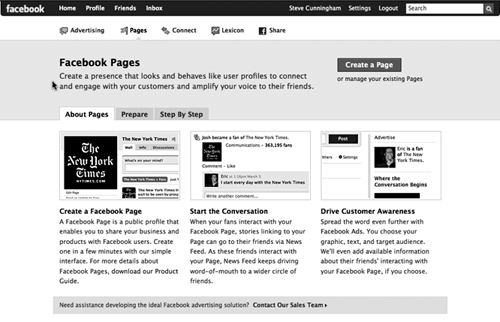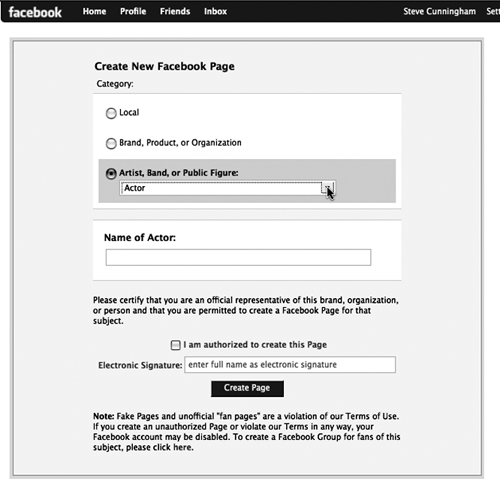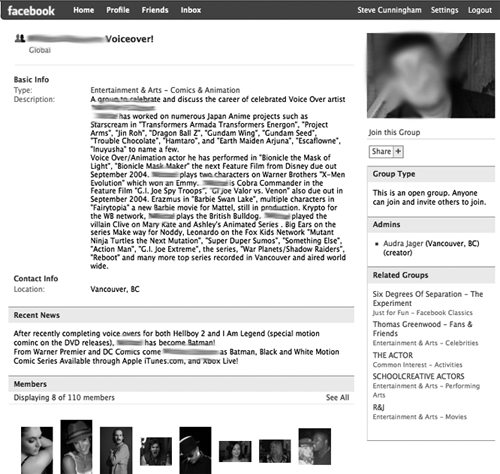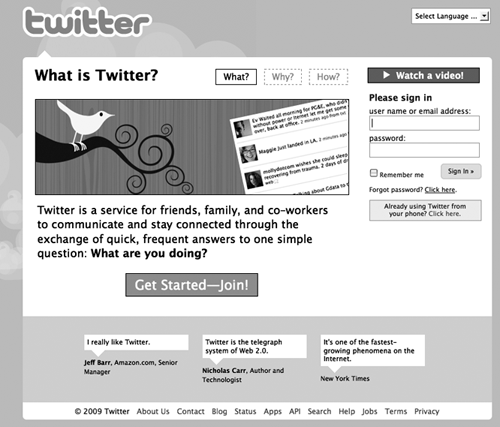by Steve Cunningham
In today’s turbulent economy, most of us involved in radio production are busy reinventing ourselves. Many pros have traditionally supplemented their income from radio by providing services to outside clients in the form of voiceover or production. But yesterday’s supplementary income has rapidly become today’s sole income, as more of us are forced to become independent contractors.
If you’re one of those independents then you know you need a website, and most of you already have one. But how do you drive potential buyers of your services to your website rather than someone else’s? How do you increase your website’s ranking in Google? The answers are SEO, or Search Engine Optimization, and recommendations gathered through the intelligent use of social networking websites. This month we’ll take a look at a few techniques that can raise your online profile. The best news is that they are all free.
GROUND RULES
In order to use these tools effectively, you first have to have your own website, and a page on voice123.com or LinkedIn is not your own website. For example, let’s say you’re a voice actor who offers your services to radio stations, advertisers and ad agencies. You may already be a member of voice123.com or voices.com. Unfortunately, tens of thousands of voice actors are also members, so the first thing you want to do is to make sure that to put links to your dedicated website in your profile on voice123 or voices.com.
But not every potential client will want to wade through thousands of voices on those sites, and that’s the real reason for having your own dedicated site. It gives you the ability to precisely control how your online presence appears to search engines. Search engines like Google, Yahoo Search, and Ask.com evaluate the relevance of your website against a set of search terms. The more relevant your website is to a particular search term, the higher your ranking will be.
If a potential client simply goes to Google and enters the term “voiceover”, you want your personal website to appear on the first page of the search results, if possible. That’s where SEO comes into play.
SEO
Search Engine Optimization is a buzzword that’s been bandied about a great deal over the past couple of years. Heck, I have a friend who makes his living optimizing client websites for search engines. But what is it really? Simply put, SEO is the part of your marketing strategy that addresses potential clients who start their search with Google or other search engines. It helps your website rank higher in the search results. This in turn helps more people who are looking for your service to find you. Of course, you could purchase keyword advertising from Google that would guarantee that your site would show up in a search using those keywords. That can not only be an expensive proposition, but the research shows that 75% of all clicks on a Google page come from the organic results rather than from the paid links.
It’s important to understand how Google decides which websites are most relevant to a search. While the actual mathematical algorithms are complex and quite secret, we do have a rough idea of how Google generates a “score” for a web page. It examines two factors; the first factor is the content of that page, and Google weights the content at about 25% of the total score it gives to the page. The other 75% comes from links that come into that page from other websites. The more inbound links it finds, the higher Google scores the page.
So if you want your voiceover website to be high on the list of results when a client Googles “voiceover,” you need to have a lot of content on your site that discusses voiceover, and you need other voiceover-related websites to link to yours. Let’s start with the content.
One of the reasons that blogs and blogging software are so popular today is that blogs are by nature Google-friendly. A good blog contains lots of articles on a particular topic that Google’s search bots can crawl, and that’s one of the reasons that I recommended blogging software for creating your website (see the May 2007 issue of RAP). Not only does it make adding new content to your site simple, but Google likes blogs. Google also likes page titles that are descriptive and makes sense, as well as website descriptions that clearly describe the content of the site. So if you have a voiceover website, make sure that your pages all have titles and that the word voiceover is part of the titles. Also ensure that the website description includes the word voiceover, and that the word voiceover appears as one of your keywords in your website’s metadata (ask your webmaster or do a Google search on “metadata” - it’s part of the html <head> code).
How then do you get other websites to link to you? The simplest way is to ask clients or colleagues to recommend you to others by putting links on their websites back to yours. That’s a good place to start, but there is a far more efficient way to put your links on other websites, and no one will object. It’s called social networking, and includes LinkedIn, Facebook and Twitter, among others.
GET YOUR LINK ON
Unless you’ve been living in a cave for the last two years, you are surely aware that social networking is big news. According to the political pundits, these so-called “member communities” and social websites figured significantly in the last US presidential election.
The Nielsen Company has just released a report that documents the explosive growth of social networks and their global impacts. You can read it yourself here: http://tinyurl.com/bwpnym, but what they discovered is that the growth of these social networks is both remarkable and widespread. According to Nielsen, 6 out of 10 online users visit a “member community” regularly. Overall, Internet use is still growing but the use of social networks is growing at three times that rate.
Moreover, social networks are not just for kids anymore. According to Nielsen, “the greatest growth for Facebook has come from people aged 35-49 years of age (+24.1 million). Furthermore, Facebook has added almost twice as many 50-64 year olds visitors (+13.6 million) than it has added under 18 year old visitors (+7.3 million).” (Nielsen, “Global Faces and Networked Places,” March 2009). The overall demographic of social networks is clearly trending older, and that’s good news for you because it gives you more opportunities to gather recommendations from friends, colleagues, and clients, as well as brand your own pages with our links. These become the inbound links that feed your website.
The current king of social networks today is Facebook <www.facebook.com>. According to Nielsen, Facebook is visited by three of every ten online users, and logs more total user-minutes than any other social site. Originally designed for and marketed to college students, Facebook has become a gathering place for people to find long-lost friends, meet new people and, yes, make business connections.
Currently there are three basic categories of Facebook pages. The first is the basic individual page, where you can post information and updates, photos, videos, and of course links to your website. As you invite and collect “friends” on your page, they will see your postings and updates on their home page that opens when they first login. Individual pages are limited to 5000 friends total, and bless you should you come up with that many.

The second type is a special interest or “group” page, from which you can send mass e-mails to as many friends as you like. Group pages also feature an online discussion board, much like a bulletin board or forum on other sites. Group pages or normally organized around a topic, so they may not be appropriate for advertising your service.

The third type is the so called “fan” page. Fan pages have no limits on the number of friends you can collect, and it’s easy to send messages to your fans. Facebook has recently made changes to fan pages, so they behave much more like individual pages. This is a good thing in that they are now more interactive than they were previously, but sending e-mails to all of your fans is still somewhat laborious. If you visit the advertising section of Facebook, which can be found at www.facebook.com/advertising/?pages (see figures 1 and 2), you’ll see that these pages are specifically designed for advertising products or services, and are likely the most appropriate forum for you to advertise your service. But if you’re small or just starting out, an individual page will likely do just as well. But there are no hard and fast rules, as the group page in figure 3 illustrates.

LinkedIn <www.linkedin.com> has been around longer than Facebook, and in fact it’s often been described as “Facebook for grownups.” LinkedIn is a member community of professionals, including both voiceover and production pros, who post their resumes and accomplishments and create connections between themselves and their colleagues and clients. Recommendations can be exchanged as can leads for work.

While LinkedIn does not have anywhere near the membership of Facebook, it is more business-oriented and therefore has a more professional feel. But it is yet another opportunity to post your website links, and to get others to do the same for you.
Twitter <www.twitter.com> is the current darling of social networks. It’s commonly referred to as micro-blogging, since at Twitter message (known as a “tweet”) is limited to 140 characters. Originally designed as a sort of always-on Instant Messaging service for kids (there’s those kids again!), Twitter has recently become a valid method of creating a community around a product or service. I knew it was “on” when I saw the first book on Twitter last August, and it’s done nothing but grow since. In fact, over the past several months Twitter has grown to become a potent force, as the number of unique visitors to twitter.com has climbed from 4-6 million per month to nearly 10 million.

Twitter’s unique feature is its “follow/following” model, which eliminates the opt-in/opt-out problem inherent in email marketing. Anyone can find and follow you (so they will see your tweets), but you don’t have to respond and follow them in return. And if you don’t follow them then you won’t see their banal messages.

What’s important to you about Twitter is that you can post your news there at the same time you post it to your website, blog, Facebook page, etc. What’s more, you can include a link to your website in every post you create, generating even more Google bait.
PURE RECOMMEND SITES
The final frontier for increasing your presence on the web includes websites that aggregate other websites’ content from reader recommendations. Included in this are sites like StumbleUpon <www.stumbleupon.com/>, Digg <digg.com/>, Mixx <www.mixx.com/>, Technorati <technorati.com/ >, and Reddit <reddit.com>.
What do you do with these? You post short excerpts from every new item that goes on your website, that’s what. I have seen remarkable increases in traffic and in Google ranking from simply posting a bit from a website’s home page onto a few of these aggregator sites. By creating news items on these sites that include a link to my site, I give Google more reasons to rank my site higher.
Finally, here’s one of the best tips I can give you for enhancing your online presence. Sign up for an account on Google (if you don’t already have one, and Google mail is reason enough alone to do that), and after you’ve signed in go to their Webmaster Tools section <www.google.com/webmasters/tools/dashboard >. Google has some of the best SEO tools available, and they’re all free. They feature step-by-step instructions on how to optimize your website to be as Google-good as possible. Be sure to check out the tool for creating a Google-friendly site map, which is an essential element for increasing your rankings.
Web marketing today is all about building a community around you and your service. You have friends, so why not have fans? Increase your visibility on the web, and you will increase your business. It’s just that simple.
♦

